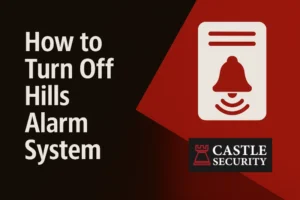In today’s complex and often unpredictable environments, understanding when to use a duress alarm in duress situations can make all the difference. These systems are a vital safety net in high risk situations, empowering individuals to request immediate assistance when their personal safety is compromised. Whether it’s for lone workers, healthcare workers, or employees in isolated areas, knowing how and when to activate a duress alert can be life-saving.
What Is a Duress Alarm?
A personal alarm is a discreet emergency device that enables a person to call for help when they feel threatened or are in danger. Duress alarms can be activated manually by pressing a button or automatically under certain conditions such as a fall. Once activated, they send a signal to a monitoring centre or response team to alert them of the emergency.
Duress alarms are commonly worn as pendants, wristwatches, or small handheld devices that can be carried on one’s person. These alarms are used in healthcare facilities, workplaces, nursing homes, and homes, ensuring personal safety across a wide range of settings. Designed to be quick and easy to use, they offer rapid assistance when time is of the essence. GPS-enabled duress alarms with location tracking can track the user’s location and send alerts if they exit a designated safe zone.
How Duress Alarms Work
Duress alarms operate via three main components:
- The duress device (such as a panic button)
- The monitoring centre or emergency contacts
- The response team that provides immediate assistance
When the alarm is triggered, either silently or with sound, the system transmits a signal using a duress alarm network, mobile phone network, or satellite network. Emergency response centres then dispatch help based on the location and type of incident. The response time is the amount of time it takes for the duress signal to be received and processed by the monitoring centre.
Types of Duress Alarms
The most common type is the panic button alarm, a small, handheld device that can be carried or worn. These are often chosen for their simplicity and portability, making them ideal for quick activation in emergency situations. Panic button alarms can be carried by an individual at all times.
Some duress alarms also include automatic fall detection, meaning they can activate even when the user is unable to press the button. This is especially valuable for seniors, individuals with disabilities, or those with medical conditions to ensure their well being . The elderly often require duress alarms to alert caregivers in case of falls or medical emergencies.
When Should You Use a Duress Alarm?
You should activate a duress alarm if you:
- Feel threatened, unsafe, or are in immediate danger
- Experience a medical emergency, such as a heart attack or fall
- Are working alone in a high-risk environment, such as security or field work
- Have been a victim of domestic violence
- Live with dementia or a medical condition and become disoriented or lost
Many duress alarms can be triggered silently, which helps protect users in threatening situations without alerting a potential perpetrator. Having the device easily accessible is crucial for timely activation, especially in stressful situations .
Who Needs a Duress Alarm?
Certain individuals benefit greatly from having access to a duress alarm:
- Lone workers, such as healthcare professionals, field technicians, or social service providers
- Workers in high-risk environments, including hospitals, security patrols, and construction sites
- Seniors living independently, who may experience falls or health issues
- People with disabilities who may need urgent assistance
- Individuals with chronic health conditions, like diabetes or heart disease, who benefit from duress alarms to call for urgent assistance
- Those at risk of domestic violence, offering discreet access to emergency services
- Elderly residents of retirement or nursing homes, for peace of mind
Benefits of Duress Alarms
The advantages of having a duress alarm are numerous:
- Enables rapid assistance during falls, accidents, or assaults
- Offers protection against domestic violence situations
- Enhances workplace health and safety by creating a secure environment
- Provides peace of mind for users and their loved ones
- Empowers employees in dangerous or isolated environments
- Reduces stress for healthcare professionals by offering backup support
- Reassures family and caregivers that help is just a button away
- Creates a culture of trust and accountability within workplaces
- Provides a safety net for lone workers by allowing them to alert a remote emergency response team
- Supports lone workers’ confidence, with over 90 percent of workers who use duress alarms reporting that they feel supported by their organisation
Choosing the Right Duress Alarm System
When selecting a duress alarm, keep the following in mind:
- Comfort and ease of use: Devices should be simple to activate and comfortable to wear
- Monitoring options: Choose between professionally monitored services or systems monitored by friends and family
- Signal transmission: Ensure the system works over duress, mobile, or satellite networks
- Response time: Ask about the average time it takes for help to arrive
- Durability: Look for shockproof or waterproof designs
- Coverage: Make sure the alarm works throughout your home, facility, or worksite
- Range: Select a device with sufficient range for your mobility needs
- Management portal: Some systems allow configuration and contact management via an online portal
- Testing: Regularly test the system to ensure it functions reliably. It is essential to regularly test the duress alarm system to ensure its functionality and reliability in emergencies.
- Price and features: Duress alarm systems vary in cost and capabilities. Some offer basic functionality, while others provide advanced monitoring and reporting tools
- Funding support: Some duress alarm systems offer payment plans or financial assistance to help individuals access the technology they need
Accessibility and Security
Duress alarms must be accessible while also being secure. They should be worn around the neck, attached to a belt loop, or kept within easy reach. Devices should be designed to avoid accidental activation while remaining simple to use in a panic.
Duress Alarms in Action
In an emergency situation, such as aggressive behaviour or a medical episode, the ability to discreetly press a duress button and speak directly with a response team can provide assistance and be life-saving. Some systems support two-way communication, letting users describe their situation while help is en route. For users in stressful or isolated environments, this immediate connection offers vital support and reassurance.
Healthcare workers face unique risks while working alone, particularly in high-stress environments or late at night. Duress alarms provide them with a dependable means to summon help quickly and confidently.
Peace of Mind in High-Risk Scenarios
Duress alarms provide a vital link to emergency assistance in high-risk or potentially dangerous situations. Whether dealing with aggressive behaviour, working in isolated areas, or managing a medical condition, these devices serve as a personal safety net, ensuring users can take appropriate action .
They offer not just physical protection but emotional reassurance to users, their colleagues, and family members. In environments where the stakes are high, a duress alarm system provides clarity, security, and a fast route to safety.
Final Thoughts
Knowing when and how to use a duress alarm is key to staying safe in unpredictable environments. Understanding how a duress alarm system work is key; with the right features, reliable monitoring, and user-friendly design, a duress alarm system becomes a life saving tool.
From lone workers to vulnerable individuals, from aged care facilities to construction sites, duress alarms provide a practical and powerful solution to personal safety, allowing users to quickly respond to emergencies. They allow users to focus on their roles and lives with confidence, knowing help is only a press away.




